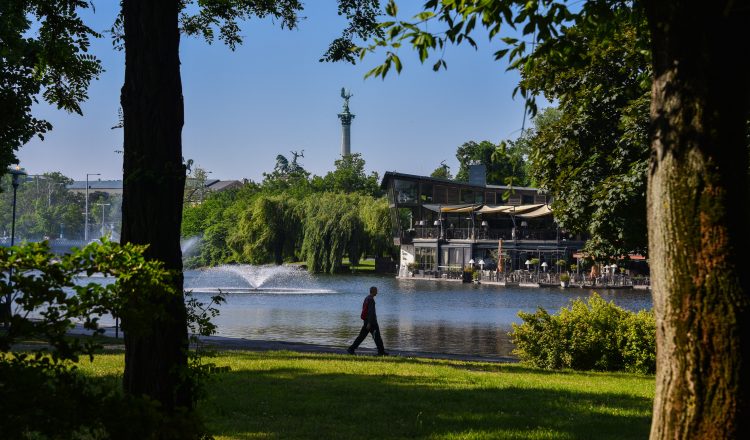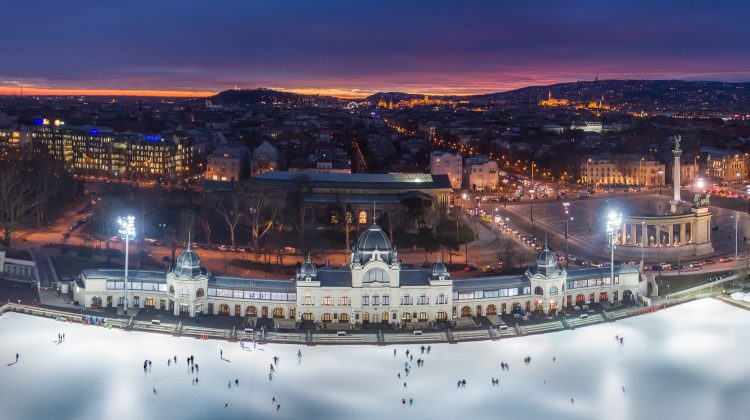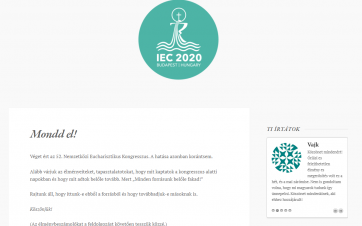
A city oasis

The Budapest City Park lies on the territory of the once called “Oxmeadow” that was stretching on a 110 hectares of barren land. Though it apparently looked a useless land, a long lawsuit was going on between the city of Pest and the successors of the Dominican nuns of Margaret Island. Finally, in 1752 the land became a city property. From 1755 a series of tree plantation programs started, though with not much success, due to neglectful attitudes. Later on a land development decree was issued by Joseph II, Emperor of Austria and King of Hungary to plant the area with acacia, willow trees and blackberries while the park had been renamed to New City Forest.
Two thousand day labourers on to build the lake
In 1794 landscaping works began, also a restaurant was built upon the city mayor’s, János Boráros proposal, moreover his conception even included the construction of a casino-resort. However, before anything could have been materialised from the grandiose plans, the property lease was moved to Prince Primate József Batthyány. Upon signing the lease contract, engineer Rudolf Witsch was commissioned to design and to proceed with the layout of the City Park. Two thousand day labourers were working on to drain the swamps, to form the lake bed and to set up the two isles.
The procrastinating heir
The Prince Primate deceased, and his nephew, Tivadar Batthyány inherited the tenancy, yet he was reluctant to continue the works, thus the City Council, to exert some pressure, ordered the construction of an Alley (Városliget Alley),to divide its roadside lands into plots and to put them on sale. In order to keep Count Batthyány motivated to carry on the landscaping works of the then already called Batthyány Forest, the city leaders even offered to erect a statue in honour of the deceased relative. In 1800 the city sold the alongside plots of the Városliget Alley, and the revenues that of were invested to proceed with the park construction. By 1802, the park was already a home to a horse racing track, an attraction for huge crowds. However, the dispute between the tenant and the city of Pest lasted for three years. Since Tivadar Batthyány did not fulfil his undertakings, the contract with him was terminated.
Fishing festival on the lake
Since until 1817 almost 50 thousand forints had already been spent for the park area, still without a single construction design, the City Beautifying Committee issued a public tender for the landscaping. Heinrich Nebbien was the successful tenderer, and to materialise his plans the City started fundraising from public donations. The wooden bridge of the smaller isle had been replaced by a wire crossing, nicknaming the isle as Wire Island as from 1826. Visitors of the City Park and its lake were entertained by military music bands and show performers, while one of the greatest attractions was the Fishing Festival on the lake. In 1830, because of a lack of heating materials in the extremely cold winter, all the trees of the Alley were cut down upon Palatine Joseph’s order. From 1832 an hourly public horse car was available for passengers from the city centre to the City Park. At the time of the 1838 great flood of Pest crowds were fleeing to the City Park area that served as shelter for people on many occasions in the following decades as well.
A beautiful Park from public donations
The final forming of the larger isle, the Peacock Island began in 1840. The Park’s east border gave home to the Hermina Chapel, designed by architect József Hild and completed from public donations in fourteen years. The Chapel was consecrated by Prince Primate János Scitovszky, while Ferenc Liszt conducted the Man Choir of the opening ceremony.
In the meantime further plots were cut off from the territory for rail construction and gardening. In 1849, when the Austrian Imperial troops fired on the city from the Castle of Buda, part of the city population found shelter here in the City Park. After the 1848-49 Revolution and War of Independence the condition of the Park sharply deteriorated, thus finally the city took control of it again. From the 1860’s festivals were organized, and the revenue that of was invested for further developments in the Park.
In a five year time a zoo, a theatre and an ice skating rink were built
In 1864 a joint stock company was formed to set up a Zoo on a 16 acres territory within the City Park and further plots were taken into lease for 30 years at a minimal fee. Two years later the Zoo opened its doors with 500 animals, and accepted some 67 thousand visitors during its first year. The year of 1869 was full of challenges for the Park: the horse-drawn rail had a stop here, the Kőmíves Imre Városliget Theater, the first Hungarian-language theatre of the Park, held its first performances, and the Skating Association of Pest was founded. In January 1870, an ice-skating rink was opened with a small wooden cottage next to it. A few years later the wooden cottage was burnt down, thus the city gave permission to build a new stable building upon the plans of the Hungarian secessionist architect, Ödön Lechner. Then came the construction of a direct connecting road, a real avenue between City Park and downtown. It took 6 years to complete the iconic Andrássy Avenue, the design of which was inspired by the Champs-Élysées, Paris.

Half a hectare of ice rink
Vilmos Zsigmondy, a Hungarian mining engineer performed drilling tests for artesian wells in the Park area, and found 73 degree Celsius water, triggering the opening of the first bathhouse in 1881. In 1883 the Parliament passed an act on the works to commemorate the millennial anniversary of the founding of Hungary, and to organise a national ceremony in 1896, the central event of which was planned to be on the City Park area. However, by the years of 1890 the condition of the park heavily deteriorated again, thus the idea was to renew it for the millennial celebrations. The previous ice skating pavilion was replaced by a new one. In 1894 a Rotunda, on the location of the present Museum of Fine Arts, was built to house the “Feszty cyclorama”, a huge painting of the Hungarian artist Árpád Feszty, and the construction of the Art Hall began. In 1895 the European Figure Skating Championship was held in the City Park. The Millennium Exhibition was opened in May 1896, in 200 buildings on the area of 55 hectares. The construction of the Széchenyi Bath and an amusement park in front of it also dates back to this period. After the collapse of the Hungarian Soviet Republic in 1920, a church, the Regnum Marianum was built in the Park. The half a hectare ice rink was constructed in 1926, hosting European hockey championships as well. In 1937 the Park Lake got a concrete bottom, and Heroes’ Square was paved for the next year’s Eucharistic World Congress.
The venue of the Apostolic Holy Masses
The devastation of World War II seriously affected the City Park. The buildings of the Ice Skating Hall, the Industrial Hall as well as the Museum of Technology and Transport were hit by bombs, even some of the bombs landed in the Park Lake. The Regnum Marianum Church was demolished in 1950, and a tender was called on to erect the statue of Stalin. In 4 years-time as from 1974, some one hundred million forints were spent on the Park. In 1985 the Petőfi Hall leisure centre and concert hall was opened. In 1989, right before the reburial of Imre Nagy and his fellow martyrs, with reference to renovation works, the statue of Lenin was taken away from the City Park, and has never been returned. In 1991 hundred thousand people attended the Holy Mass held on Heroes’ Square and celebrated by Saint Pope John Paul II. Thirty years later, this square will again be the venue of an Apostolic Holy Mass. The Closing Mass of the 52nd International Eucharistic Congress will be held here on the 12th September 2021 and is going to be celebrated by Pope Francis.
Photo: Hungarian Tourism Agency










